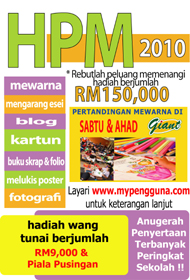 Commodities Talk - By Hanim Adnan
Commodities Talk - By Hanim Adnan
The Asean-China FTA is to date the world’s largest FTA, set to liberalise billions of dollars in goods and invesments covering a market of 1.7 billion consumers. With the duties of many products within the region been reduced to zero, the free flow of goods and commodities may seem positive but it has also led to many complaints and criticisms from various industries in the region.
The domestic steel sector, for example, is finding it more challenging to trade as the Asean FTA and Asean-China FTA have resulted in growing capacities among regional and China-based steel manufacturers.
Asean steel players appear to be installing new steel-making capacities with some even considering to move into iron-making and blast furnace mainly to mitigate the issue of supply and increasing scrap prices.
This is happening despite the fact that many of them are aware of China pushing up its steel capacities. From the world’s largest importer of steel products until 2005, it has now become the largest exporter of semi-finished and finished steel products.
With all these latest developments, the concern among domestic steel players is whether the Asean markets could actually support all the strong growth in capacity building.
In fact, the realisation that the Asean FTA would mean freer trade within the region has also encouraged Asean countries, which are not steel importers, to become steel importers in the foreseeable future.
For example, Malaysia exports about 2.5 million tonnes of steel products, particularly long-steel products, annually to Asean countries including Vietnam and Cambodia.
Vietnam, in particular, has committed to the highest number of new steel investments and capacities, both for long and flat products. Some of the steel plants set up there are mainly to supply the Asean region.
For local steel manufacturers, this would mean that in the medium term, they would not only need to compete in the region but also in the domestic market.
At the same time, Asean steel producers are already facing a sad situation whereby China’s steel products are currently flooding the Asean markets. China’s ability to export steel products at much lower prices compared with their Asean peers had lately brought not only complaints but also threats of trade actions.
Malaysia and other Asean countries are similarly affected and complaints have become louder with the implementation of the Asean-China FTA.
In fact, China is currently facing 55 trade actions on steel products, launched by the United States, Europe and several Asean countries.
There is also a growing concern now as more FTAs have been signed whereby both the industry and government agencies would have to deal with a wide spectrum of conditions and documentations as no one agreement is the same.
Therefore, industry players and the Malaysian Iron and Steel Industry Federation have highlighted to the authorities that the offer list for free trade negotiations must take the value chain of the entire industry into account and be provided on equal terms. Progressive steps should be taken to ensure that no segment within the industry is protected or advantaged at the expense of others.
Deputy news editor Hanim Adnan feels that the steel sector is quite well-regulated especially in import restrictions. But such controls had an impact on value-adding activities thus affecting the competitiveness of the industry
Sumber: http://biz.thestar.com.my/news/story.asp?file=/2010/6/29/business/6565307&sec=business












0 Responses so far.
Post a Comment